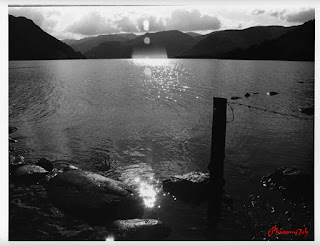I
have written on this subject before outlining the advantages of
making a contact print for your negatives. The subject has come to
the fore because a recent example shows that the negatives are poorly
exposed and possibly have a higher than normal amount of contrast.
So
where to start? With the sheet of negatives. The first thing you
notice about them is that they are well developed with good tone and
detail but on the dense side, meaning they could be over exposed / developed.
Something that can sometimes be difficult to judge from the neg's
only.
The
contact print is saying that the negatives are well and truly over
exposed and or over developed meaning that to get a balanced image is
going to require a longer than normal exposure. It is also
suggesting that the images are hard (a lot of contrast) How much will
not become apparent until the segmented test print has been produced.
My
normal exposure set up for the enlarger is F8 at grade 3 this is my
datum point to which I judge how well I have exposed and developed
the film. The first test print confirms that the negatives are very
over exposed, requiring a second test because the results are so
weak. I must admit that I was a bit blasé with my pinhole camera
exposure times. This camera tends to bring the worst out in me when
it comes to proper control but then it is all part of the fun.
I
have already compensated for the longer exposure time by opening up
the enlarging lens to F5.6 doubling the amount of light I would
usually need. I also know that the contrast is higher than normal
from a previous set of exposed photographs. It is to do with the
Studional I used to develop the negatives in. A previous session
showed that the softer grade 2 would give better results.
Without
the contact print I would have spent much longer in the darkroom
making test prints to find what the base exposure should be, if I had
not been pre warned. It also indicated that the completely white
looking skies would require a lot of burning in to bring the detail
out shown on the negatives.
For
me making a contact print ensures that I get the most out of my
printing session. It allows me to preplan what I need to do to get
the best out of each negative without wasting a lot paper and time.
The later for me is always in short supply.
Technical data:
Zero pinhole multi format 120, tripod used, Film Fomapan 100, ISO 100, Developed in Studional, Printed on Ilford multigrade gloss RC 8 x 10, Developed in Tetenal Eukobrom
AC.
 |
| Unintended double exposure. |












